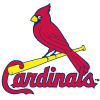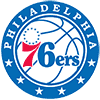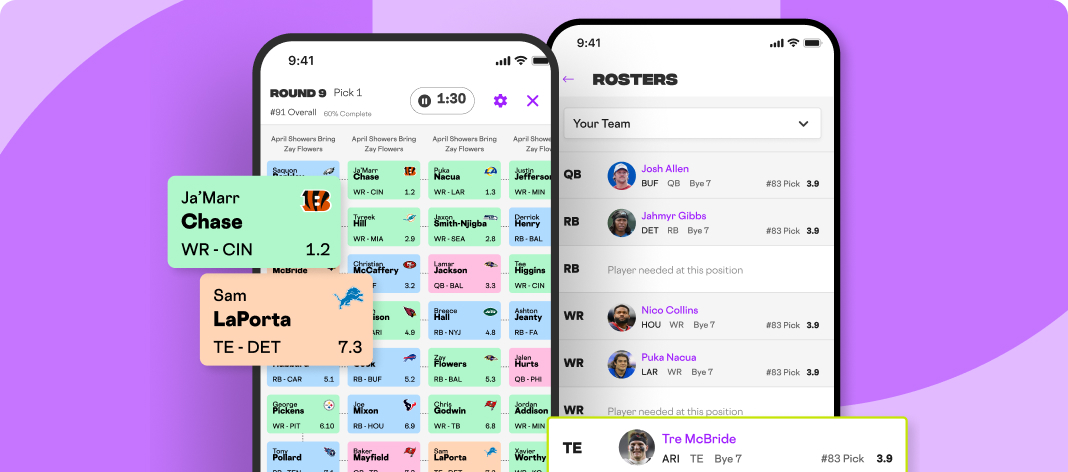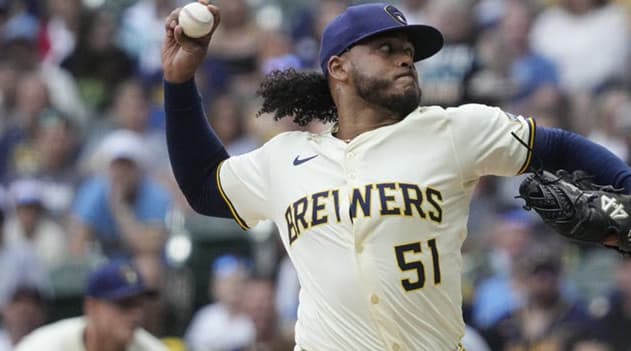Much of the early-season talk surrounds the record-setting home run pace, and rightfully so. On the flip side, stolen bases are down to fewer than one per game. The last time there were more games played than pilfers was 1972.
In rotisserie scoring, it doesn't matter that steals are dwindling. The category is worth the same as the others. Points-leagues players, however, may need to adjust expectations (a study for another day, to investigate if the decline is uniform or affects some players more than others).
It may not take as many steals to compete in today's game, but there's a smaller inventory to provide the necessary bags. Knowing where to look provides an edge. Today's discussion focuses on the teams most likely to supply the demand for those yearning to compete in the stolen base category.
Let's begin with a historical perspective. What team characteristics result in more running?
The study will look at several correlation coefficients, measuring the linear relationship between two sets of data. One input will be steals. The other will be factors with a chance to influence the level at which a team runs.
A correlation coefficient, denoted as "r", ranges from -1 to 1. Perfect positive linear correlation is 1. As one set of data increases, the other follows proportionately. When r is -1, there's a perfectly inverse relationship. That is, as one set grows, the other lessens proportionately. In terms of this study, those variables generating an r closest to -1 or 1
Much of the early-season talk surrounds the record-setting home run pace, and rightfully so. On the flip side, stolen bases are down to fewer than one per game. The last time there were more games played than pilfers was 1972.
In rotisserie scoring, it doesn't matter that steals are dwindling. The category is worth the same as the others. Points-leagues players, however, may need to adjust expectations (a study for another day, to investigate if the decline is uniform or affects some players more than others).
It may not take as many steals to compete in today's game, but there's a smaller inventory to provide the necessary bags. Knowing where to look provides an edge. Today's discussion focuses on the teams most likely to supply the demand for those yearning to compete in the stolen base category.
Let's begin with a historical perspective. What team characteristics result in more running?
The study will look at several correlation coefficients, measuring the linear relationship between two sets of data. One input will be steals. The other will be factors with a chance to influence the level at which a team runs.
A correlation coefficient, denoted as "r", ranges from -1 to 1. Perfect positive linear correlation is 1. As one set of data increases, the other follows proportionately. When r is -1, there's a perfectly inverse relationship. That is, as one set grows, the other lessens proportionately. In terms of this study, those variables generating an r closest to -1 or 1 affect steals the most.
The following team statistics over the previous four seasons will be analyzed:
· Wins
· Runs Scored
· Runs Allowed
· Run Differential
· Success rate
· Home runs
· Previous season steals
Intuitively, an argument can be posed for each stat influencing how much a team runs. Here are the results:
YEAR | W | R scored | R Allowed | R Diff | SB% | HR | Prev Yr |
2018 | 0.13 | 0.16 | -0.62 | 0.19 | 0.75 | 0.37 | 0.37 |
2017 | 0.30 | 0.20 | -0.41 | 0.30 | 0.62 | 0.30 | 0.64 |
2016 | -0.26 | -0.10 | -0.10 | -0.30 | 0.76 | -0.30 | 0.52 |
2015 | -0.16 | 0.08 | -0.04 | -0.05 | 0.60 | -0.03 | 0.19 |
The factor most impacting stolen bases is the success rate of attempts. The second-best correlation is last year's total. Factors associated with scoring don't consistently line up with team steals.
So we have the data for reference, here's last season's ranking of steals by team.
| Team | SB |
| Indians | 135 |
| Rays | 128 |
| Red Sox | 125 |
| Brewers | 124 |
| Nationals | 119 |
| Royals | 117 |
| White Sox | 98 |
| Rockies | 95 |
| Padres | 95 |
| Braves | 90 |
| Angels | 89 |
| Orioles | 81 |
| Mariners | 79 |
| Diamondbacks | 79 |
| Reds | 77 |
| Giants | 77 |
| Dodgers | 75 |
| Rangers | 74 |
| Astros | 71 |
| Mets | 71 |
| Pirates | 70 |
| Tigers | 70 |
| Phillies | 69 |
| Cubs | 66 |
| Yankees | 63 |
| Cardinals | 63 |
| Twins | 47 |
| Blue Jays | 47 |
| Marlins | 45 |
| Athletics | 35 |
It's early, but here's the ranking of the 30 teams based on success rate. The idea being, teams with the lowest rate of caught stealing should be among the stolen base leaders by season's end, so they're excellent offenses to target for individual players.
| Team | SB | CS | SB% |
| Tigers | 7 | 1 | 87.5% |
| Rays | 18 | 3 | 85.7% |
| White Sox | 15 | 3 | 83.3% |
| Angels | 5 | 1 | 83.3% |
| Diamondbacks | 9 | 2 | 81.8% |
| Mariners | 19 | 5 | 79.2% |
| Brewers | 7 | 2 | 77.8% |
| Nationals | 10 | 3 | 76.9% |
| Pirates | 10 | 3 | 76.9% |
| Red Sox | 10 | 3 | 76.9% |
| Indians | 10 | 3 | 76.9% |
| Cubs | 9 | 3 | 75.0% |
| Dodgers | 5 | 2 | 71.4% |
| Mets | 10 | 4 | 71.4% |
| Yankees | 5 | 2 | 71.4% |
| Rangers | 15 | 6 | 71.4% |
| Royals | 20 | 8 | 71.4% |
| Giants | 7 | 3 | 70.0% |
| Cardinals | 9 | 4 | 69.2% |
| Athletics | 7 | 4 | 63.6% |
| Padres | 7 | 4 | 63.6% |
| Orioles | 7 | 4 | 63.6% |
| Phillies | 5 | 3 | 62.5% |
| Braves | 8 | 5 | 61.5% |
| Rockies | 8 | 5 | 61.5% |
| Astros | 10 | 7 | 58.8% |
| Blue Jays | 4 | 3 | 57.1% |
| Marlins | 6 | 5 | 54.5% |
| Twins | 3 | 3 | 50.0% |
| Reds | 3 | 5 | 37.5% |
The r for this data is 0.51. Based on recent campaigns, some teams with high success rates but limited swipes will administer the green light while those running with poorer results will begin to put up the stop sign. Obviously, there will be exceptions, lest the coefficient would be 1. Still, there's some actionable takeaways from the early-season data.
Teams Likely to Run More
Look for the Tigers, Angels, Diamondbacks and Dodgers to increase their thievery. Of course, some of the low attempts are due to personnel, but the numbers show as a team, the better the success, the more a team runs.
Given that there's roster turnover, rolling in last season's totals could help unearth teams to target. Of the above four offenses, the Angels (11th in 2018) and Diamondbacks (14th) are most likely to take off more. Possible beneficiaries from the Halos include David Fletcher and Andrelton Simmons while Christian Walker, Nick Ahmed and Ketel Marte are Snakes apt to slither more.
Teams Likely to Run Less
To this point of the season, the only club with double-digit steals but a poor success rate is the Astros. Off the field, Houston is analytically driven. Between the lines, they're a veteran club, just a year removed from winning it all. To date, both Jake Marisnick and Yuli Gurriel have been nabbed both times they've chanced a steal. Look for that duo to curtail future running with the likes of Jose Altuve, Alex Bregman, Michael Brantley, George Springer and Carlos Correa still trusted to pick and choose spots to run.
Thus far, the focus has been on the offense. The other side of the coin is defense. Intuitively, teams should temper attempts facing teams with batteries adept at controlling the running game. Here's the correlation between the rate of catching runners and attempts against over the past four seasons:
Year | r |
2018 | 0.30 |
2017 | 0.57 |
2016 | 0.35 |
2015 | 0.32 |
Curiously, there's some connection, but it's not exceptionally strong. Teams confident in their running ability continue to take advantage. Still, it doesn't hurt to know how catchers are faring early, especially when considering marginal or middle-of-the-pack individual players. The following displays the number of steals attempted against and the success rate. That is, the lower the success rate, the better the team has been defensing steals:
| Team | SB att | SB% |
| Orioles | 11 | 36.4% |
| Rockies | 11 | 54.5% |
| Giants | 16 | 56.3% |
| Diamondbacks | 7 | 57.1% |
| Rays | 14 | 57.1% |
| Nationals | 12 | 58.3% |
| Cubs | 10 | 60.0% |
| Tigers | 15 | 60.0% |
| Blue Jays | 11 | 63.6% |
| Pirates | 11 | 63.6% |
| Phillies | 14 | 64.3% |
| Twins | 9 | 66.7% |
| Indians | 10 | 70.0% |
| Rangers | 14 | 71.4% |
| Angels | 15 | 73.3% |
| Padres | 15 | 73.3% |
| Royals | 12 | 75.0% |
| Brewers | 13 | 76.9% |
| Athletics | 18 | 77.8% |
| Braves | 9 | 77.8% |
| Mariners | 18 | 77.8% |
| Astros | 14 | 78.6% |
| Red Sox | 14 | 78.6% |
| Cardinals | 5 | 80.0% |
| Reds | 15 | 80.0% |
| Mets | 16 | 81.3% |
| Marlins | 6 | 83.3% |
| White Sox | 14 | 85.7% |
| Yankees | 18 | 88.9% |
| Dodgers | 10 | 90.0% |
The season is barely three weeks old, but so far, it's a mistake to run against Baltimore. Though, with the quality of their pitching staff, why would you? On the other hand, once word gets out, look for the Dodgers, Marlins and Cardinals to be challenged more often.
An argument can be tendered it's too early to base decisions on limited data. However, with fewer steals in today's game, every individual bag is that much more relevant. Gaining even the slightest of edges can be the difference between winning and losing. The data presented aids in unearthing players with a chance to run more, as well as a platform to help decide when to utilize them in your lineups.























